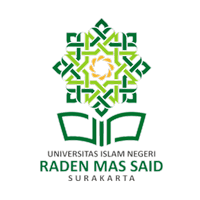INTEGRATION OF TRADITIONAL AND MODERN METHODS ARABIC LANGUAGE LEARNING IN THE DIGITAL ERA (A STUDY AT SDIT AL ANIS KARTASURA SUKOHARJO)
Contributors
Rio Kurniawan
Keywords
Proceeding
Track
General Track
License
Copyright (c) 2025 International Conference on Cultures & Languages

This work is licensed under a Creative Commons Attribution-NonCommercial-NoDerivatives 4.0 International License.
Abstract
This article departs from the view that methods play an important role in the process of learning Arabic, especially in Islamic educational institutions. With the development of technology and the rapid digitization in the world of education, modern technology-based learning methods are beginning to dominate. Nevertheless, there is a gap between traditional and modern approaches. Traditional methods are considered less responsive to technological advancements, while modern approaches sometimes overlook the values of depth, perseverance, and meaningful learning that have long been upheld in traditional methods. This poses a challenge in creating an effective, relevant, and balanced Arabic language learning system. This research takes a case study at SDIT Al Anis Kartasura Sukoharjo, which has a system that adopts a Pesantren (Islamic boarding school) and is combined with the government curriculum, promoting and developing an integration of the National Curriculum from the Ministry of Education, Ministry of Religious Affairs, and the distinctive Integrated Islamic Schools, namely the system oriented towards Pesantren developed by the Al-Anis Kartasura foundation. This study is descriptive qualitative, with an analysis using an interactive model, namely data reduction, data presentation, and conclusion drawing. The results are as follows: First, the integration of traditional and modern methods in Arabic language learning in the digital era has a positive impact on the effectiveness and quality of the teaching and learning process. Second, learning at SDIT Al-Anis is like at a Pesantren, collaborated with the current government curriculum. The integration of traditional and modern methods not only enables transformation in Arabic language learning but also opens opportunities to enhance the quality of education that is contextual, adaptive, and competitive in the digital era.

